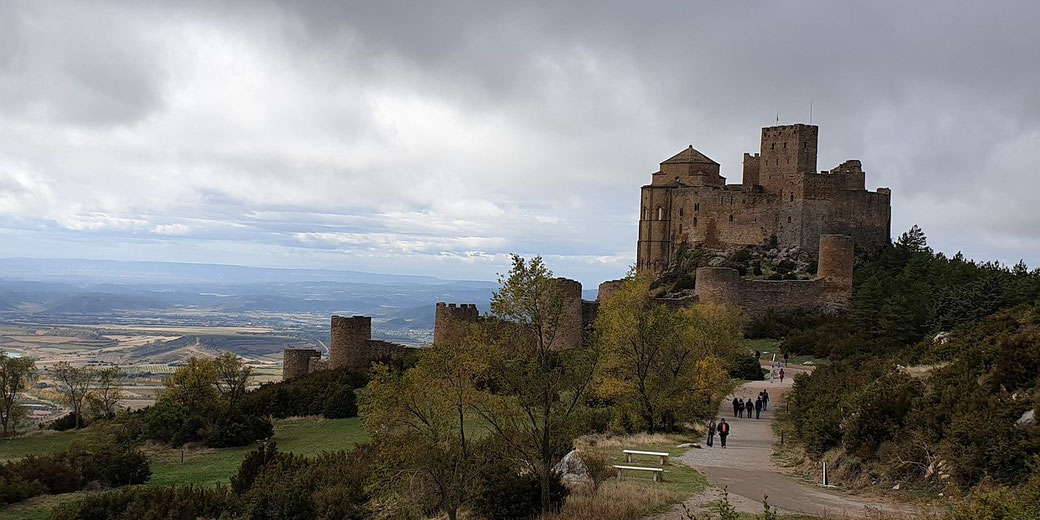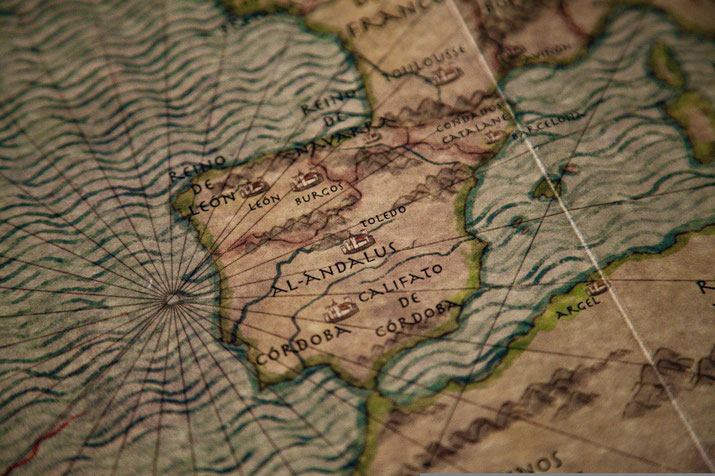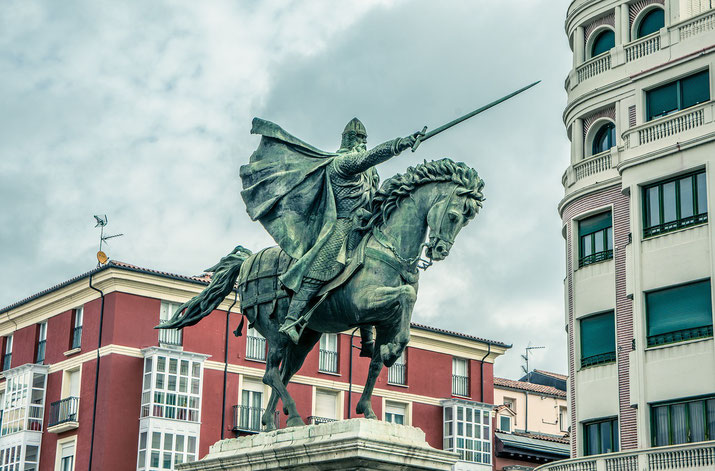What was the Spanish Reconquista?

For nearly eight centuries, the Iberian Peninsula (modern Spain) was a battleground of faith, power, and culture. Christian kingdoms fought fiercely to reclaim their lands from Muslim rule, leading to a drawn-out struggle known as the Reconquista.
The campaign began in AD 718 and lasted until AD 1492, when Granada, the last Muslim stronghold in Iberia, fell to the Catholic forces.
What happened to Spain after the fall of Rome?
The region of Iberia, which is modern Spain, had been controlled by different people groups in the ancient world.
Most notably, the Roman Empire controlled it from the time of the Second Punic War at the end of the 3rd century BC, until the fall of the Western Roman Empire in the 5th century AD.
The western half of the Roman empire fell apart due to constant pressures from invading Germanic tribes.
These tribes eventually captured and settled different parts of western Europe and set up their own kingdoms.
The Visigothic Kingdom was the first Germanic kingdom in Iberia, and it lasted from AD 410-718.
Initially, the Visigoths were Arian Christians, which was different to the Christianity of the Roman Catholic Church.
However, in around AD 589, the Visigoth leader Reccared I converted to Catholic Christianity, along with his subjects.
From this point on, they were considered to be a Christian Kingdom.
However, in the early 7th century, a new religious force emerged in the Middle East, known as Islam.
Its followers quickly expanded the Umayyad Arab Muslim empire, which soon reached the borders of Visigothic Spain.
In AD 711, at the Battle of Guadalete, the Visigoth King Roderic was defeated and killed by the invaders.
Following this, Iberia gradually became an Islamic kingdom instead of Christian.
How Spain was conquered by the Muslims
After the defeat of the Visigoths, the Arabs took control of Spain and ruled it for centuries.
The Umayyad Caliphate, which was based in Damascus, controlled most of Spain from AD 720-756.
However, their rule was challenged by a competing Muslim dynasty known as the Abbasids who overthrew the Umayyads in AD 750.
The Abbasids moved the capital of the Caliphate from Damascus to Baghdad, which caused many Muslims in Spain to break away and establish an independent Emirate in Cordoba.
The last Umayyad prince, Abd al-Rahman I, fled to Spain and established the independent Umayyad Emirate of Cordoba in 756, which lasted until AD 929.
In AD 929, the Muslim lands were declared a Caliphate by Abd al-Rahman III, which created the Caliphate of Cordoba instead.

The Reconquista of Spain begins
The reconquest of Spain began in AD 718 when the Christian king Pelagius defeated the Muslim army at the Battle of Covadonga.
This victory encouraged successive Christian rulers to launch similar attacks on the Muslim forces in the hope of recapturing all of Spain for the Christian religion.
The victory also established the Christian Kingdom of Asturias, which became the first Christian stronghold in Iberia during the early stages of the Reconquista.
The process of 'recapturing' or 'reconverting' was known as Reconquista. The reconquest continued throughout the centuries as different Christian kingdoms slowly wrested control of territory from Muslim rule.
The next major event in the reconquest happened 300 years later, when Alfonso VI of Castile took the city of Toledo in 1085.
He followed the Arab custom of keeping the multi-religious character of this culturally developed metropolis, which included Muslims, Christians, and Jews.
For a time, he called himself to be 'emperor over the two religions'.
After a series of devastated defeats at the hands of Christian armies, the Muslim rulers in the south sought military support from a new Muslim people group called the Almoravids.
The Almoravids were a Berber dynasty based in Morocco in north Africa.
The Almoravids, landed in Spain in 1086 and swiftly overran the Christian strongholds that had been recently conquered.
They are ultimately stopped on the east coast by the famous Christian military hero, El Cid, who captured the city of Valencia in 1094.
Then, the city of Saragossa fell to the Christians in 1118.
The advance of the Christian kingdoms gradually weakened the Almoravids and, in 1147, the Almoravid's capital city in north Africa, Marrakesh, was captured by another group of Muslim Berbers, called the Almohads.
The rise of the Almohad dynasty
With the fall of the Almoravids, the Almohad dynasty took over control of the Muslim parts of Spain.
They were able to push back against the Reconquista and conquered parts of Spain between 1147 and 1212.
In particular, the Almohad victory against the Christian King Alfonso VIII at the Battle of Alarcos in 1195 temporarily halted Christian advances and reaffirmed Muslim control over large parts of Iberia.
In desperation, he called on the other Christian kings in Europe to help him.
In response to his call, Pope Innocent III declared a Crusade against the Almohads in 1212.
With the extra crusading troops, Alfonso led an alliance of Christian kings from Castile, Aragon, and Navarre to a decisive victory over the Almohad emir of Morocco, Muḥammad al-Nāṣir, at the Battle of Las Navas de Tolosa in July 1212.
Under the leadership of King Ferdinand III of Castile, the Christian armies were able to capture Cordoba in 1236 and forced the city of Sevilla to surrender in 1248.
By this point, both Christian and Muslim forces were exhausted.
The Nasrid Kingdom of Granada, the last Muslim state in Iberia, which was founded in 1230, managed to survive for over two centuries by paying tribute to the Christian kingdoms.
So, for the next century, the Reconquista ground to a halt, as the Christian kingdoms focused on rebuilding their newly conquered territories and reestablishing their economies.
The end of the Reconquista
The reconquest of Spain was finally completed in 1492 when the Catholic Monarchs, Ferdinand II of Aragon and Isabella I of Castile, conquered the last Muslim stronghold of Granada.
These two rulers combined the two most powerful Christian kingdoms: Castile and Aragon.
They herd originally signed the Treaty of Granada in 1491, which formalized the surrender of the Muslim Emirate of Granada to Ferdinand and Isabella.
As part of this agreement, they promised religious tolerance for Muslims, although these promises were later violated.
The Mudejar population, Muslims who remained in Spain after Christian conquests, often faced harsh restrictions and discrimination.
With the fall of Granada, the reality was that Muslims were no longer allowed to practice their religion openly and were forced to convert to Christianity or leave Spain.
During their several decades in power, both Isabella and Ferdinand were worried about the religious beliefs of their subjects.
The people in their kingdom were a mix of Jews, Christians, and Muslims.
However, they wanted all of their subjects to be Christians. Therefore, they ruled that people either convert or leave their lands.
In 1492, the same year as the fall of Granada, Ferdinand and Isabella issued the Alhambra Decree, which ordered the expulsion of all Jews from Spain unless they converted to Christianity.
It became obvious quite quickly that, in order to avoid leaving, many people pretended to convert to Christianity, but still practised their own faith in private.
For rulers that took their religion seriously, Isabella and Ferdinand wanted to find out who was faking their faith.
To this end, they established the Spanish Inquisition in 1478. It was initially aimed at monitoring the actions of converted Jews (conversos) and Muslims (Moriscos) for signs of continued practice of their former religions.
However, the Inquisition also became a tribunal that investigated heresy and apostasy among Christians.
Those who were found guilty could be tortured or burned at the stake.
Despite its growing brutal reputation, it continued in various forms until it was officially abolished in 1834.
The impact of the Reconquista
The 781-year period of Muslim rule in Spain, and the subsequent Reconquista had long-term impacts on the history of Spain.
Modern historians argue that the militarism that formed the heart of the Reconquista created a Spain which promoted religious conformity.
Furthermore, the expulsion of Muslims and Jews in 1492 resulted in the spread of ideas and cultures throughout the Mediterranean world, as these people sought new homes.

Further reading
What do you need help with?
Download ready-to-use digital learning resources
Copyright © History Skills 2014-2025.
Contact via email
With the exception of links to external sites, some historical sources and extracts from specific publications, all content on this website is copyrighted by History Skills. This content may not be copied, republished or redistributed without written permission from the website creator. Please use the Contact page to obtain relevant permission.





